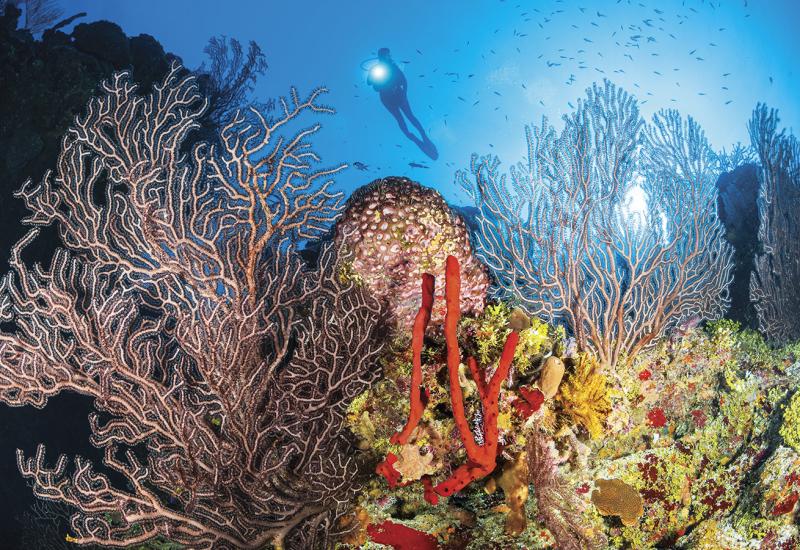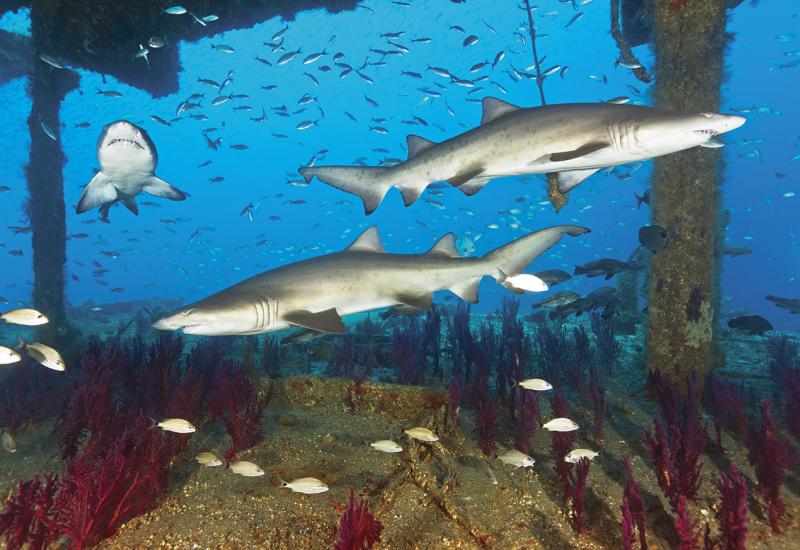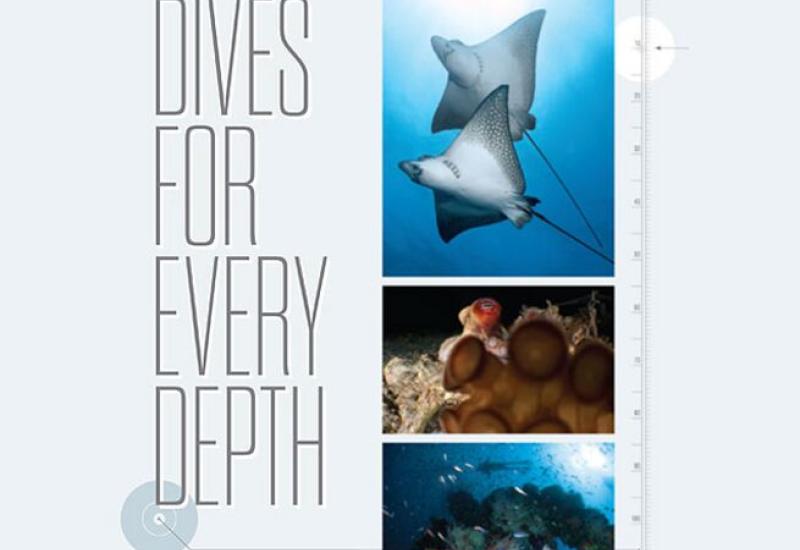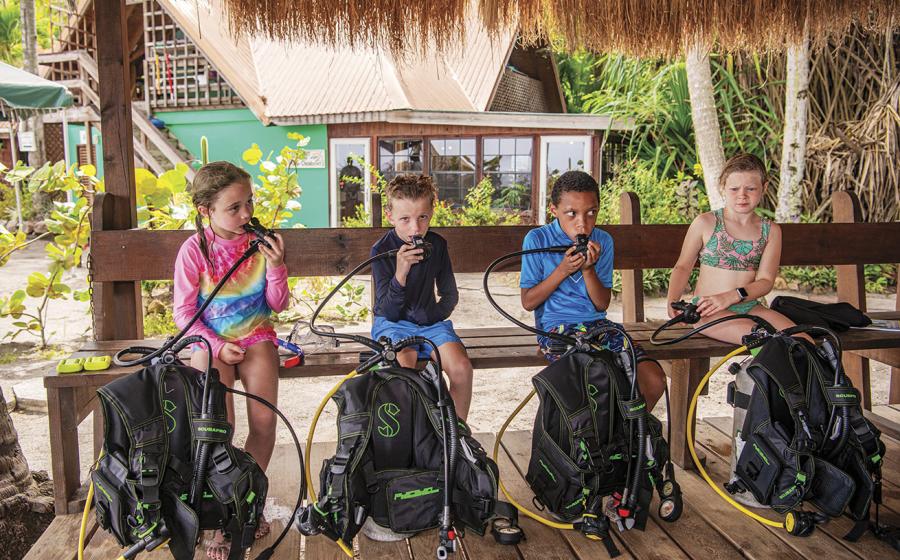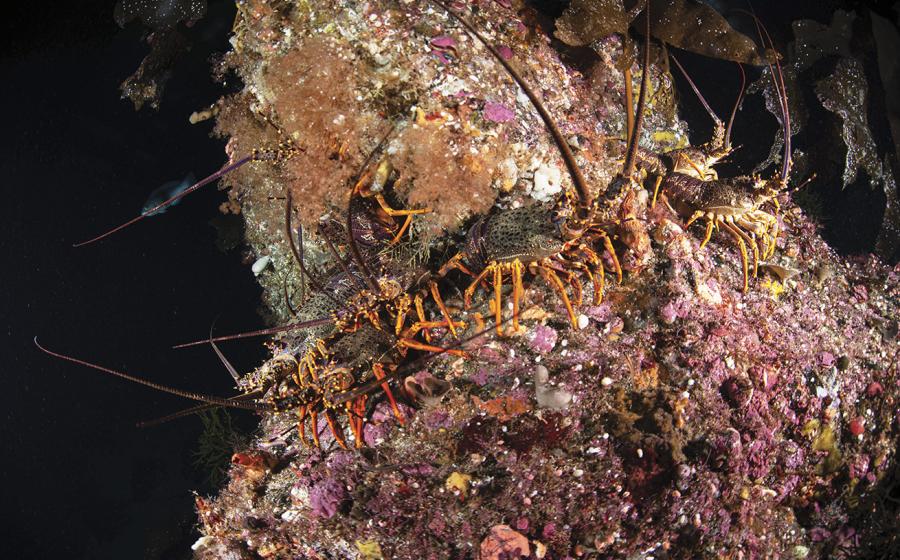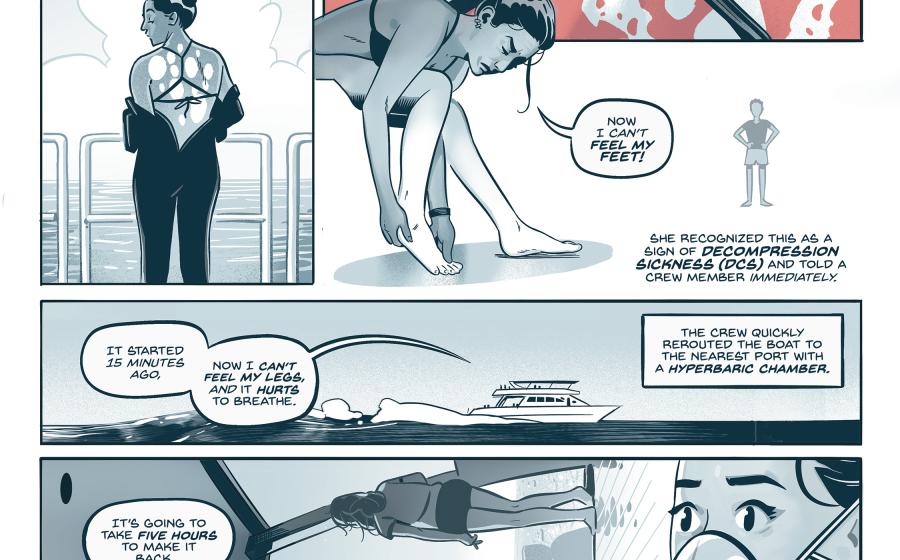What It's Like to Dive From a Luxury Liveaboard
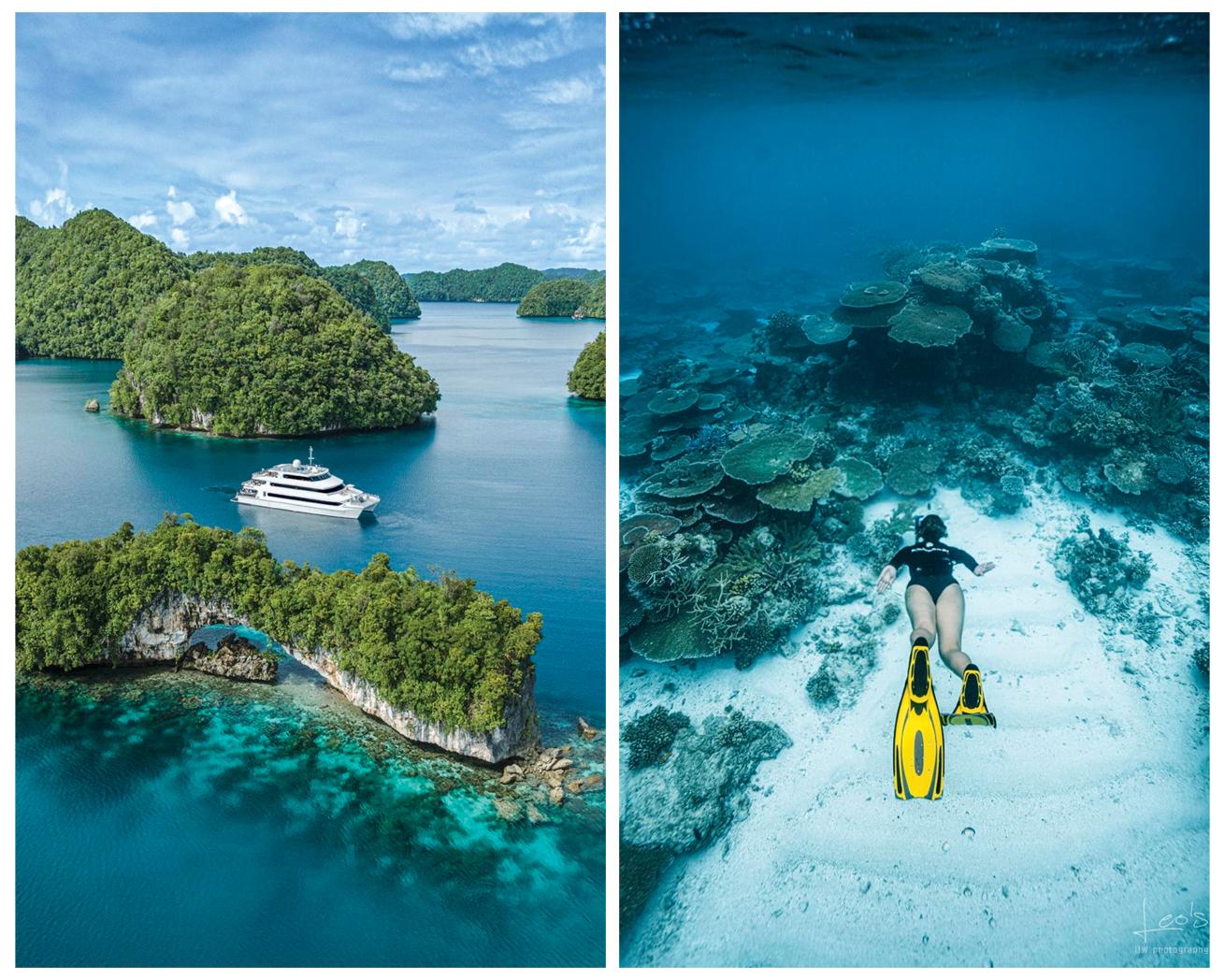
Courtesy Four Seasons Explorer Palau; Leo LeungLeft: Four Seasons Explorer at Palau’s Rock Islands. Right: The author freedives at Ngerchong Inside.
Deep in a bay off Ngeruktabel Island, I am flowing slowly with the current in a kayak beneath the shaded overhang of one of Palau’s many Rock Islands. The tiny, forested limestone mound rises from the water in a way I can only describe as Jurassic. Tropicbirds chase each other through the warm equatorial air, their ribboning tails trailing jubilantly behind them, scrawling secret avian messages into the deep emerald canopy.
I am back in Palau and pinching myself.
A discreet distance away, my chase boat waits. On board, two crew in starched polos—chilled towels and a cold bottle of water at the ready—are poised to slide the dinghy into gear should I so much as flutter a hand signal their way.
It is my fourth time in Palau in 14 years, my favorite place in all the world to dive, but Four Seasons Explorer, anchored a short distance away near a natural arch worthy of a screen saver backdrop, is not your standard liveaboard.
I am one of just a few guests aboard this luxury catamaran that relocated to the Southern Rock Islands Lagoon, a UNESCO World Heritage Site, in late 2023 after several years cruising and diving the Maldives. And I’m far from accustomed to this level of pampering on a dive trip.
Related Reading: Palau's Enduring Dive Appeal
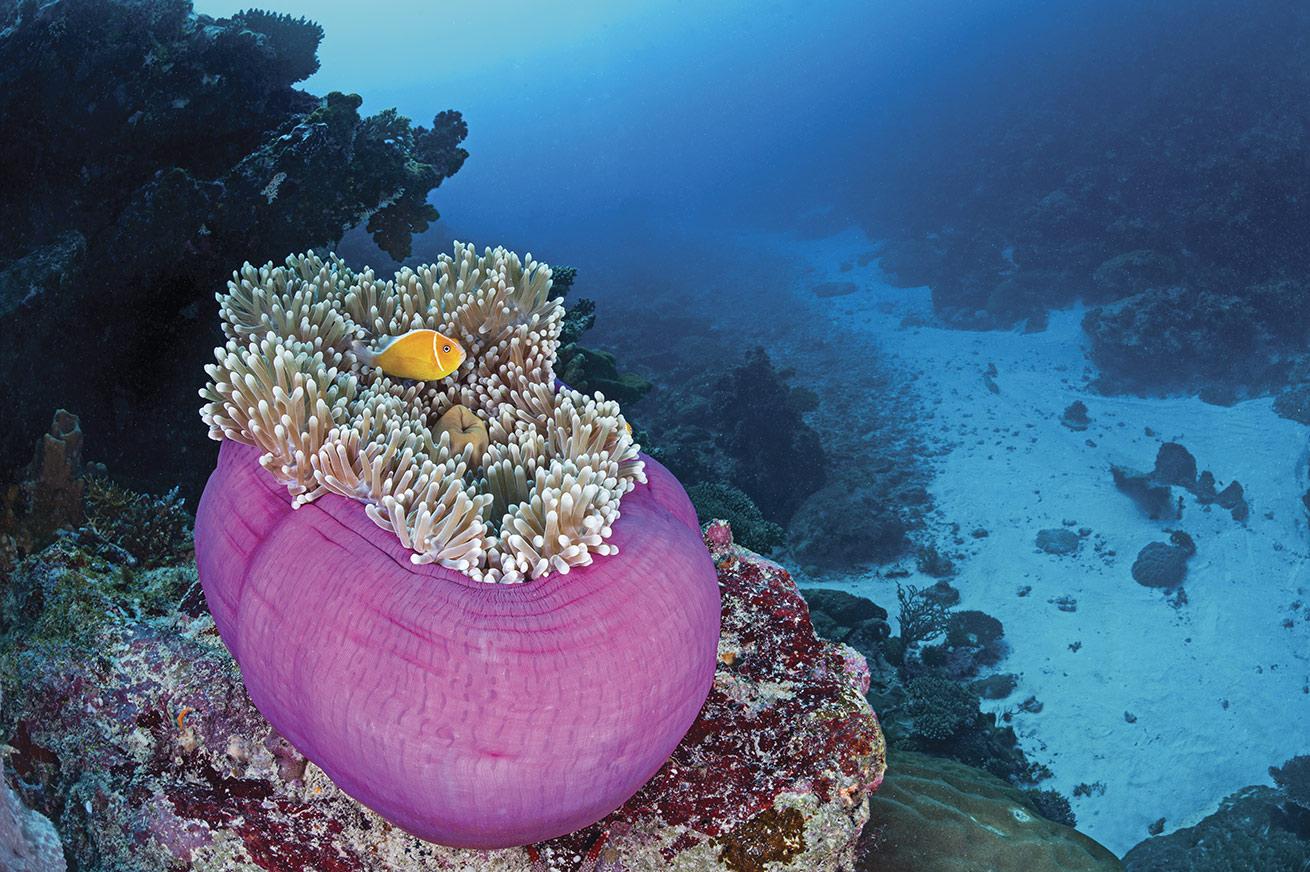
Alex MustardA pink anemonefish hovers close by its home.
Taking It Slow
My first day on board, I arrive just in time for a quick checkout dive with the liveaboard’s activity manager (almost all of the crew are PADI certified, and many are instructors), Angela Gitaprakasa, who is originally from Indonesia but worked on the ship for many years during its Maldives era.
“I don’t trust anyone until I dive with them,” she says, smiling but serious, and we head down to a sloping reef for a quick skills review. Safety is serious business on board Four Seasons Explorer. All guests have marine rescue GPS devices attached to their BCDs capable of signaling their position all the way to Guam.
We’re keeping things local on a night dive at Soft Coral Arch on the southwest side of Urukthapel Island. Normally I opt for sunset hammocks and margaritas over night dives, but as soon as we enter the water, I’m glad I rallied.
A current pushes us through the water beneath a narrow archway as if on a conveyor belt through a dream—billowing pink, orange, purple and white soft corals carpet the limestone with a cacophony of color made all the more luminous in the glow of our torches. Gitaprakasa, a macro lover who will show me all kinds of wonders (including anemonefish eggs!) during the week, points out a tiny shrimp sheltering in the current on a coral, and we surface as the sky’s last sherbet hues smudge to gray.
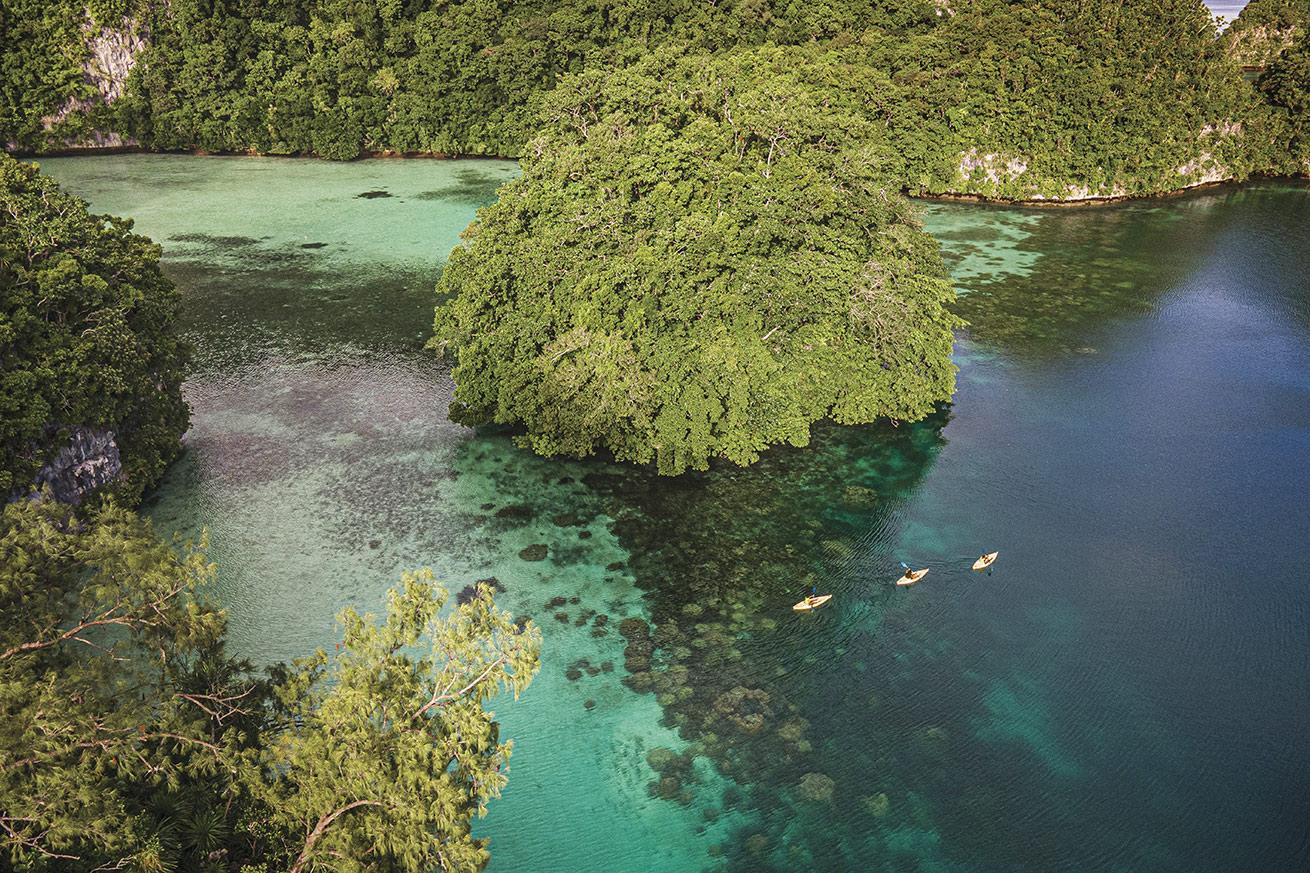
Courtesy Four Seasons Explorer PalauGuests paddle kayaks past lush limestone outcroppings.
I awake the next morning to daybreak’s soft pink painting the sky like someone stretched cotton candy across it. Palau Conservation Society naturalist Heather Ketebengang arrives via tender from Koror and beckons me on board for some birding.
“There are 168 officially recorded birds here,” she says as we cruise atop smooth, jade-colored water in the Rock Island bays. “I say that because we discover new ones almost every year.”
Palau has 14 endemic bird species of its own and lies along two major bird flyways, delivering all manner of migratory birds to the Rock Islands from Siberia, Australia, Alaska and beyond.
Draped with wild orchids and Palau’s national flower, the white rock lily (called rur in Palauan), the nearly vertical Rock Islands appear impenetrable. And while we can hear the flute-like whistles of bush warblers and Palauan fruit doves cooing—the magenta-crowned birds are painted such fantastical colors they hardly look real—they remain obscured in the lush vegetation.
Black noddies, terns and endemic Palau fantails whiz past. “Their nests look just like ice cream cones,” Ketebengang says of the latter.
Suddenly, a rapid-fire chorus rises around us. “That’s the sound we didn’t want to hear,” she says, explaining it’s a Palau flycatcher’s call, a sound Palauans know as a harbinger of rain. Less than a minute later, the skies unleash a warm tropical downpour that whips the water around us into a frothy fury.
Related Reading: Dive Hotspots: Hawaii, Palau and Bahamas
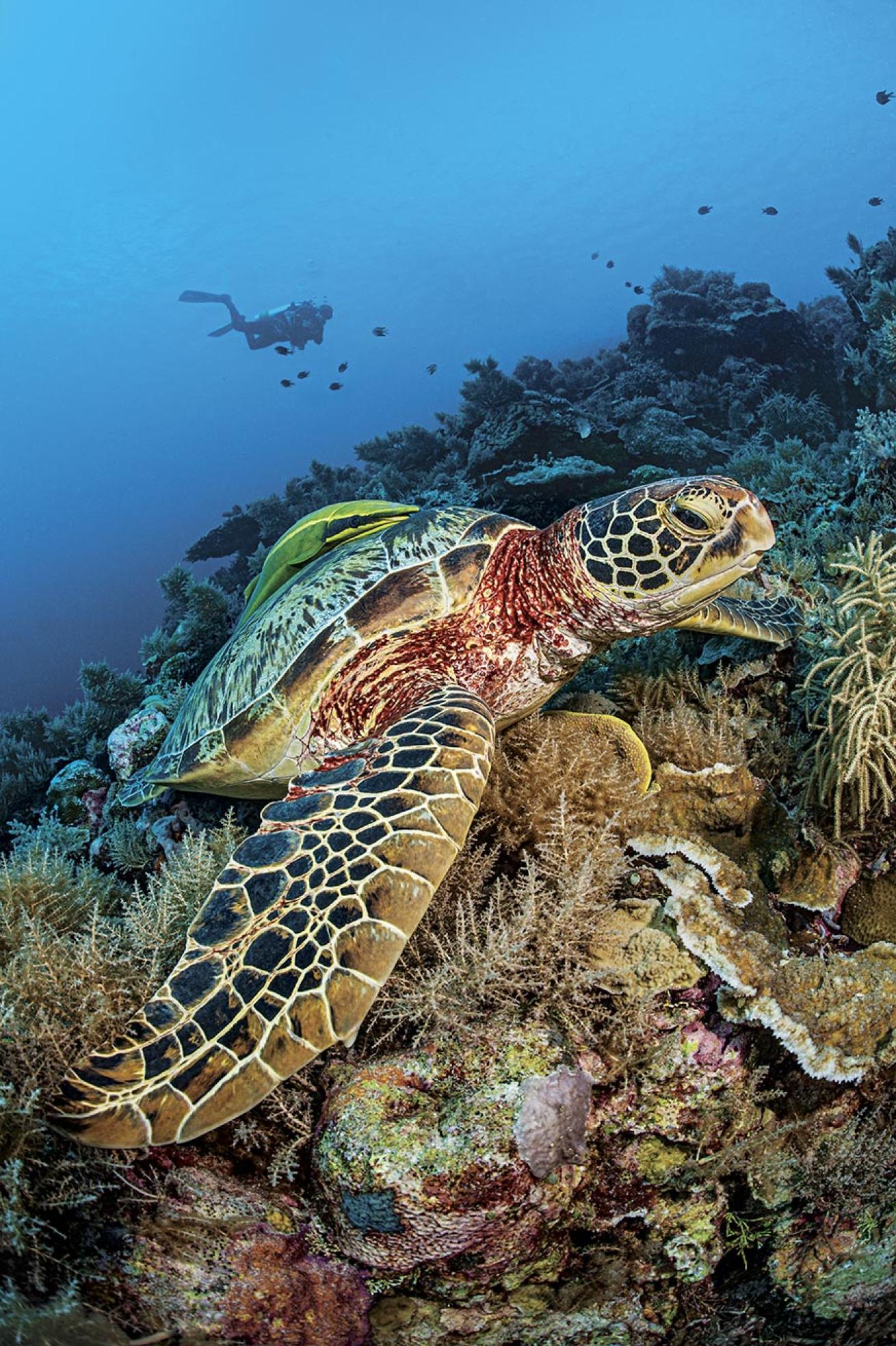
Alex MustardLeft: A green sea turtle touches down on the reef.
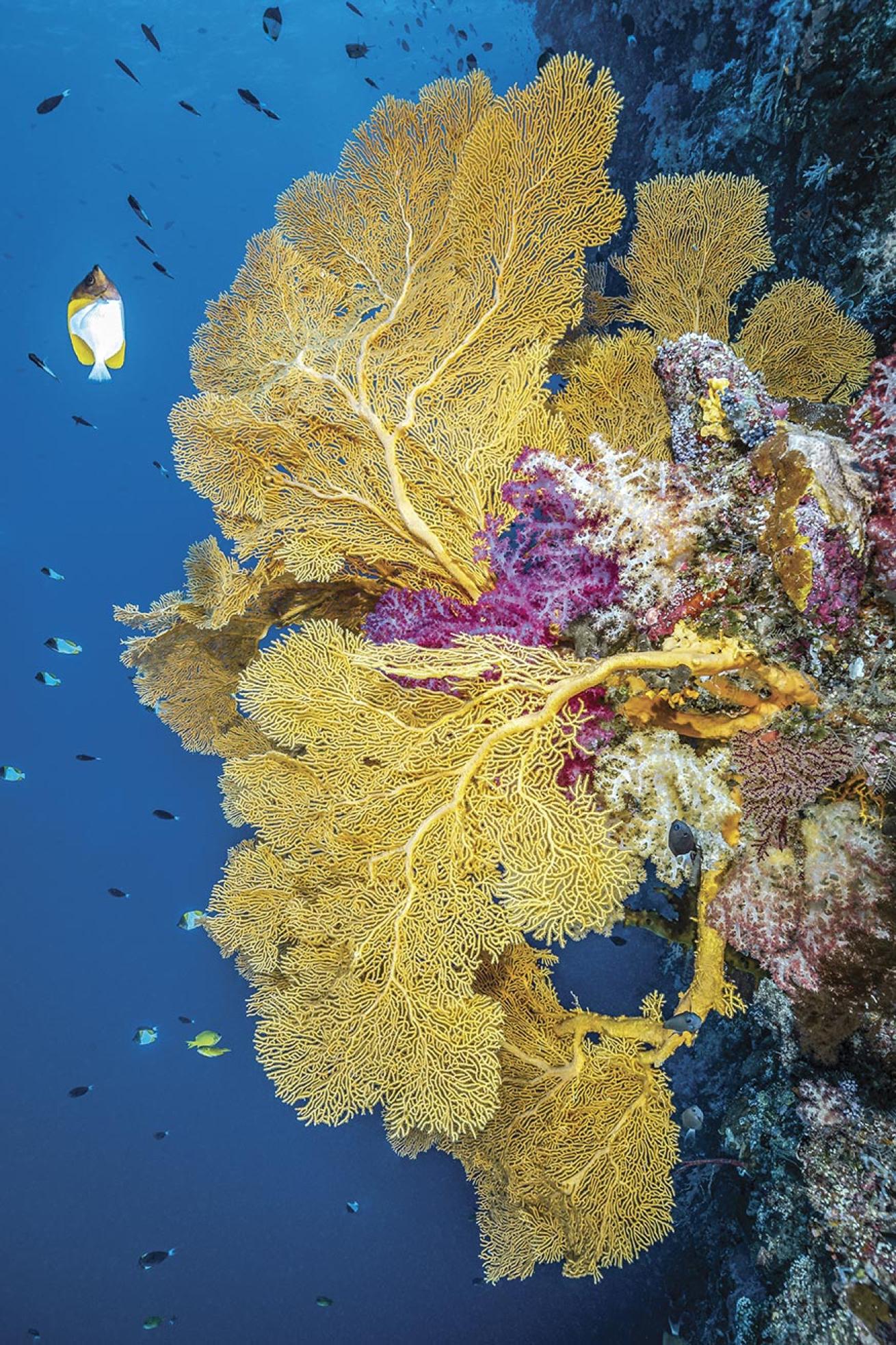
Tobias FriedrichReef fish flit around colorful soft corals and sea fans.
A Private Tour
By the time we arrive at the dive site later that morning, the sun is back out and beaming with such intensity you’d think it had never pulled its disappearing act at all.
“I know you like reef dives, so you’ll love this one,” says Óscar Aguilar, the ship’s resident marine biologist, briefing me at Short Drop Off. The rest of the divers are off on a day trip on the liveaboard’s other dive tender this morning—a benefit of the ship having its own mini fleet.
The crew spent several months getting to know Palau’s dive sites and waters with a Palauan diver before welcoming the first guests on board, he tells me. And like everyone I meet on Four Seasons Explorer—including the mostly Maldivian crew (several Palauans are currently in training with Four Seasons at the company’s Maldives resorts)— Aguilar tells me it’s the condition of Palau’s corals that really blew his mind on arriving in the archipelago. We giant-stride off the tender and are met with visibility easily pushing the 100-foot range and a riot of soft and hard corals in undulating layers. My head is on a constant swivel the entire dive, oscillating between gray reef sharks and hawksbill and green turtles finning past me among clouds of colorful fusiliers that make the whole place shimmer.
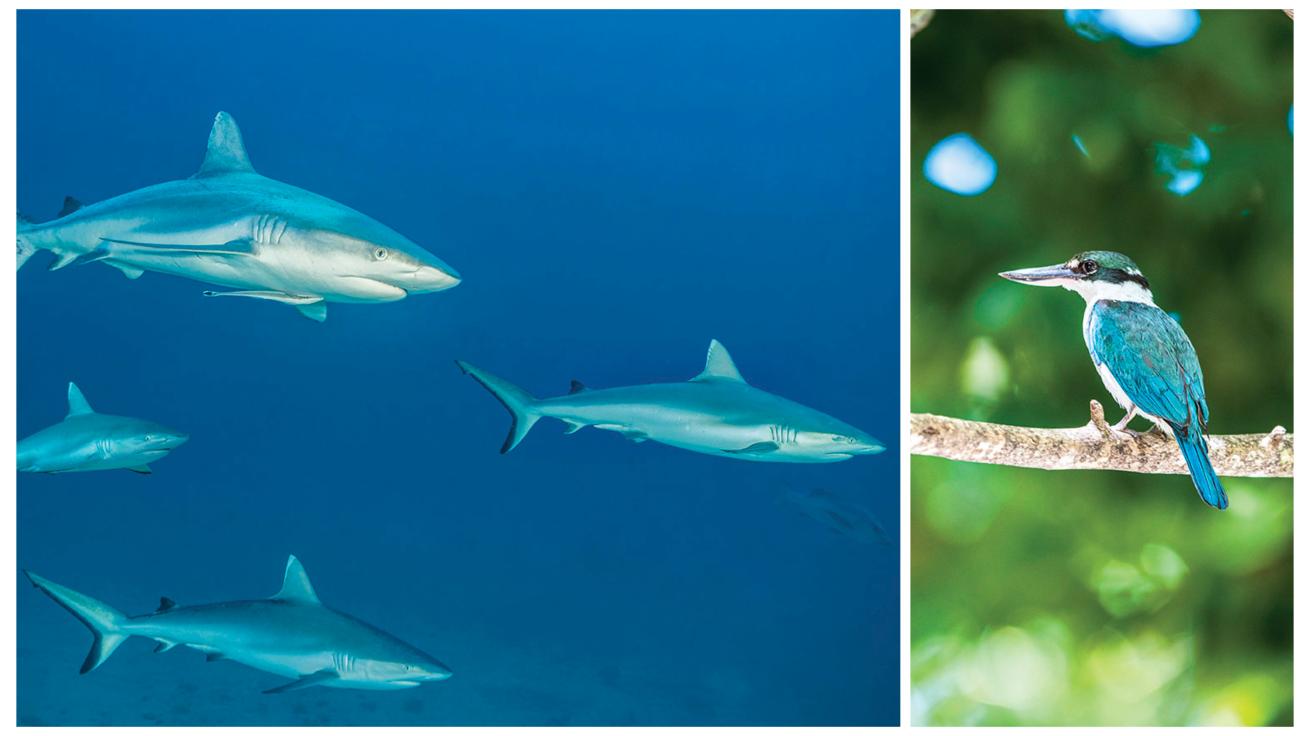
Gerald NowakLeft: Gray reef sharks lurk at the dive site Blue Corner. Right: The collared kingfisher is one of more than 160 bird species sighted in Palau.
Lap of Luxury
Surface intervals on Four Seasons Explorer’s dive tender—itself a catamaran capable of whisking divers out to the reef at speeds of up to 25 knots—feel nearly spa-like, as a plush towel gets cast over my shoulders and herbal tea and espresso is proffered in china cups alongside pistachio cakes and fruit kabobs.
The 128-foot-long mothership, outfitted with 11 cabins—all with the same dizzyingly high-thread-count linens, rain showers and gourmet meals Four Seasons devotees are used to at land-based resorts—is unlike any other liveaboard I’ve experienced.
Designed to operate as a floating hotel within the Rock Islands (where Four Seasons has plans to open an actual landbased hotel at some point in the future—bringing the liveaboard here was a way to literally test the waters), Four Seasons Explorer and its onboard PADI Five Star Dive Center operate differently from most liveaboards.
For starters, as opposed to the usual four or five dives a day standard on most liveaboards, Four Seasons Explorer’s pace is more leisurely, with just three dives a day and the odd night dive thrown in once or twice a week for guests who are keen.
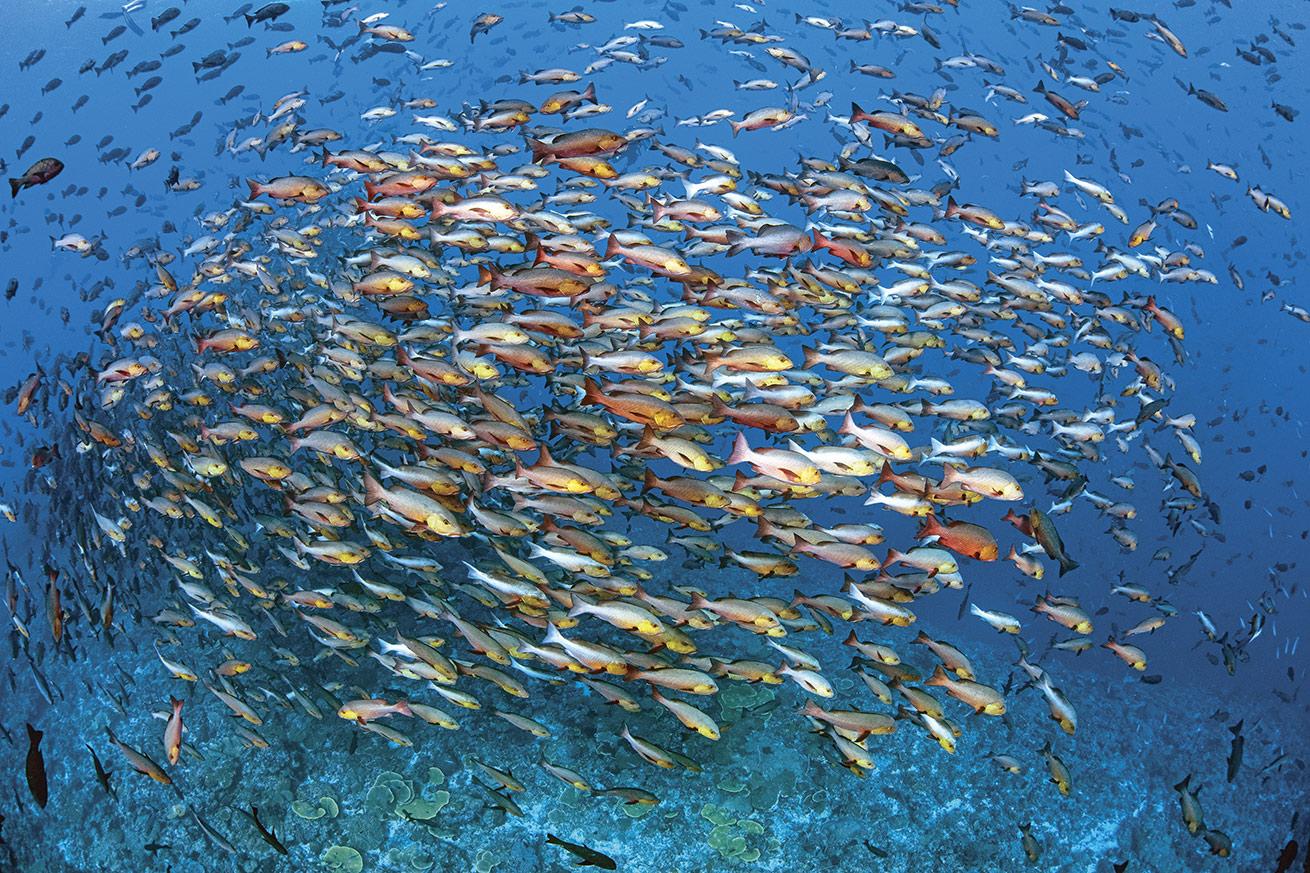
Gerald NowakA school of snapper at the Rock Islands dive site Shark City
It’s possible to come aboard for a single night, a few days or longer, making it easy to accommodate other plans in this far-flung part of the world roughly 550 miles east of the Philippines in the Pacific Ocean. Four Seasons’ private tenders are on standby in Palau’s friendly capital, Koror, to ferry guests to the mothership. During my stay I shared the boat with a maximum of five other guests—at one point there were just three of us.
I’ve been diving for more than 25 years, since I first got certified as a college kid schlepping tanks to the Florida springs, and as it turns out, I’m very into this flexibility, pace and luxury as my age nears the midcentury mark.
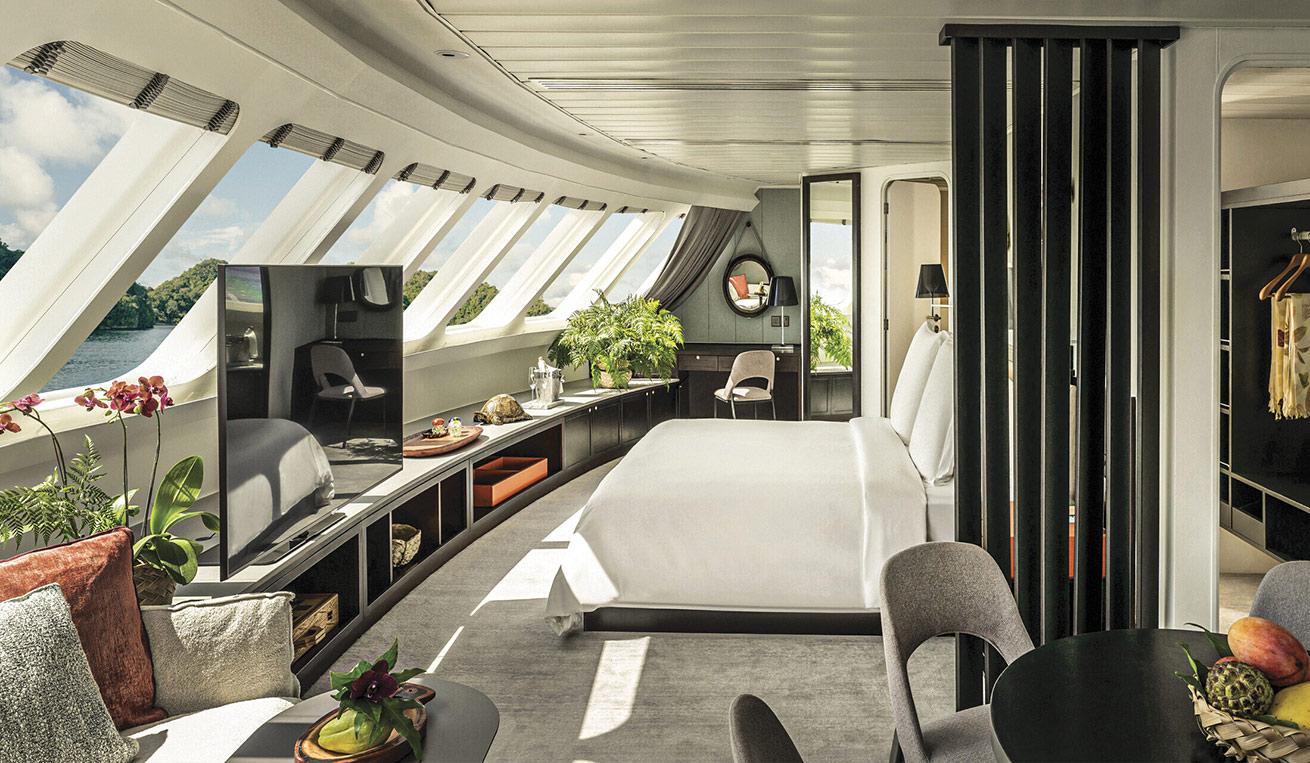
Courtesy Four Seasons Explorer PalauThe liveaboard’s luxe Explorer Suite.
Four Seasons life is so luxe and Palau so fascinating, in fact, you could ostensibly not dive at all, relegating your days to snorkeling shallow coral gardens, kayaking through mangroves and exploring on shore during day trips to spots like Ngarchelong to see ancient stone monoliths or Peleliu Island’s World War II sites.
But for a diver, of course, not diving in this place at the edge of the Coral Triangle— home to more than 1,300 species of fish, 700 kinds of coral and sharks galore, all protected within the world’s first national shark sanctuary—is unthinkable. And I vow to neither put shoes on nor step off Four Seasons Explorer unless it’s for a giant stride or to kayak during all five glorious days of my stay.
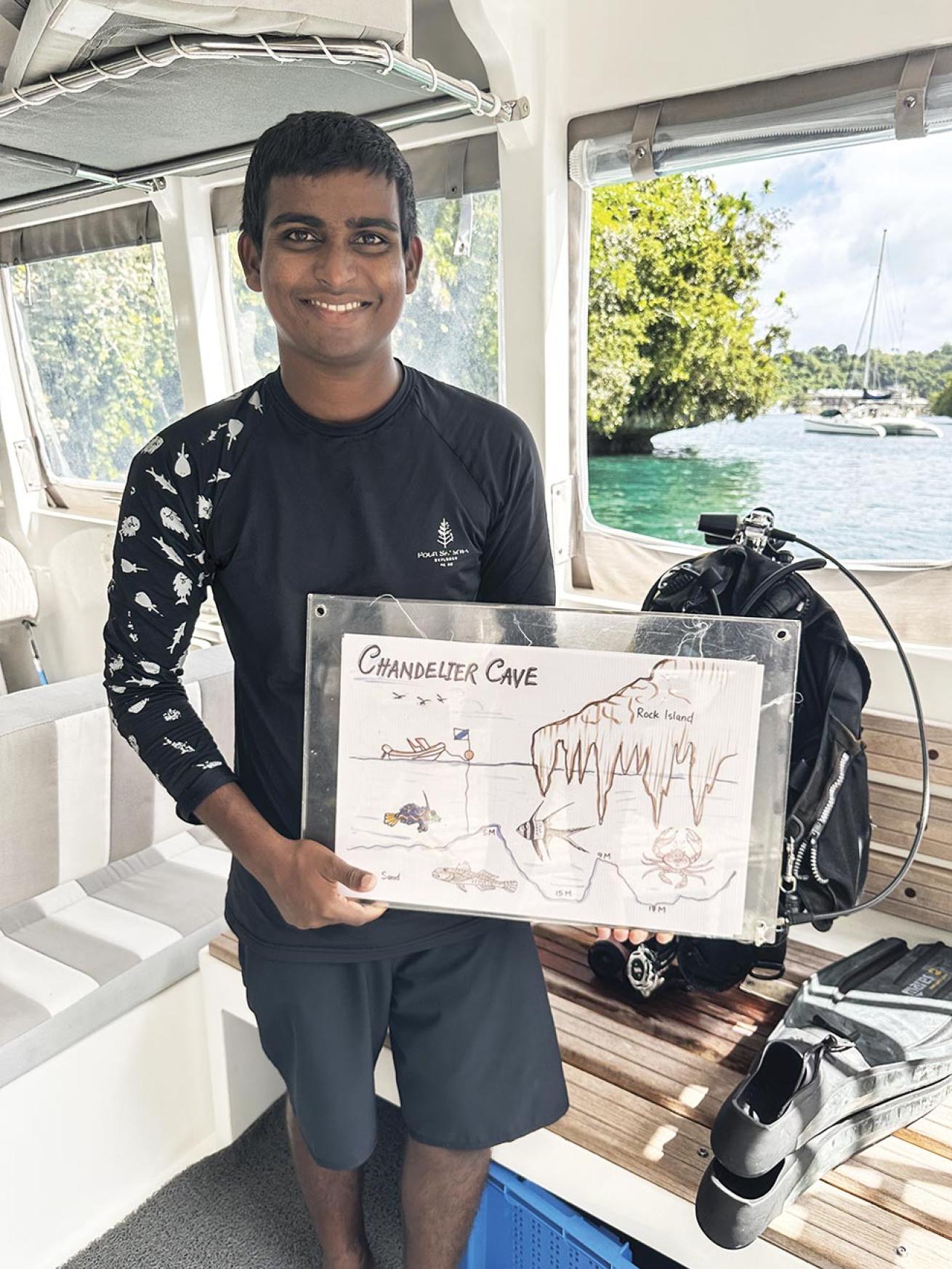
Terry WardA Four Seasons Explorer guide performs a dive briefing with a hand-drawn map of Chandelier Cave.
Greatest Hits
The week flies by in a parade of my favorite diving sites of all time, and some new-to-me sites too.
At Ulong Channel, a site I last dived in 2012, I beam through my mask at the sight of the lettuce corals towering as high as I remember them, their jittery soldierfish residents still peering out like always with the air of highly suspicious neighbors.
At German Channel, Palau’s famed cleaning station for manta rays, Aguilar tells me he has yet to be skunked in months of diving the site several times a week. I worry I’ll jinx his streak. But sure enough, two of the gentle giants fly above us for the entirety of our dive as I kneel, transfixed, in the sand.
Blue Corner unsurprisingly refuses to be topped, and on a single tank we see scores of reef sharks, blacktips, several hawksbill turtles, a shoal of Moorish idols clouding the blue and trailing their fin tendrils like cheerleaders’ ponytails behind them, huge schools of midnight snapper and dogtooth tuna, and the usual massing of redtoothed triggerfish fluttering everywhere. When we surface, someone asks if I’d seen the sailfish. I had somehow missed them, but I hardly feel like I’ve been cheated. My brain is practically short-circuiting with the affirmation that Palau’s dive sites are just as I remembered them.
We motor during the day and anchor at night, with transit times rarely longer than an hour from one ridiculously scenic bay to the next. It’s my first time diving a site called Grasslands, which is actually huge coral heads rising from the sand where reef sharks mosey up and thrust their jaws out for a scheduled detailing at cleaning stations. I take out my regulator and blow little bubbles for a quick floss session too, and the wrasse are happy to oblige through my giggles.
The surprise dive of the trip for me comes at Turtle Cove off Ngercheu Island, where we descend into a narrow blue hole in the reef that opens into a wide cavern, the exit glowing bright turquoise below.
I follow Aguilar to a wall fluttering with bright-purple fairy basslets that scatter like bowling pins at our approach. Disco clams stuck to the rock have their shells open wide as if smiling for the camera, revealing neon-orange mantles that flash electric blue in our torch light. The dive continues with no fewer than 15 green turtles and more reef fish than I can name—there are longnose butterflyfish, squarespot anthias, pyramid butterflyfish in sunburst clouds against the blue, and huge schools of midnight snapper and rainbow runners too. It’s the kind of dive I live for—fishy as hell, and colorful and chaotic with characters like a kindergartner’s drawing. The kind of dive you surface from, rip the reg from your mouth and ask yourself if it really just happened—and when you can do it again.
I’m clearly overstimulated and could easily be wooed into a siesta—the bedding with its superior thread count beckons from my cabin—but FOMO is my middle name, and it’s hard to stay inside in a place this beautiful, even when I’m not diving.
Related Reading: 8 Best Places for Shark Encounters
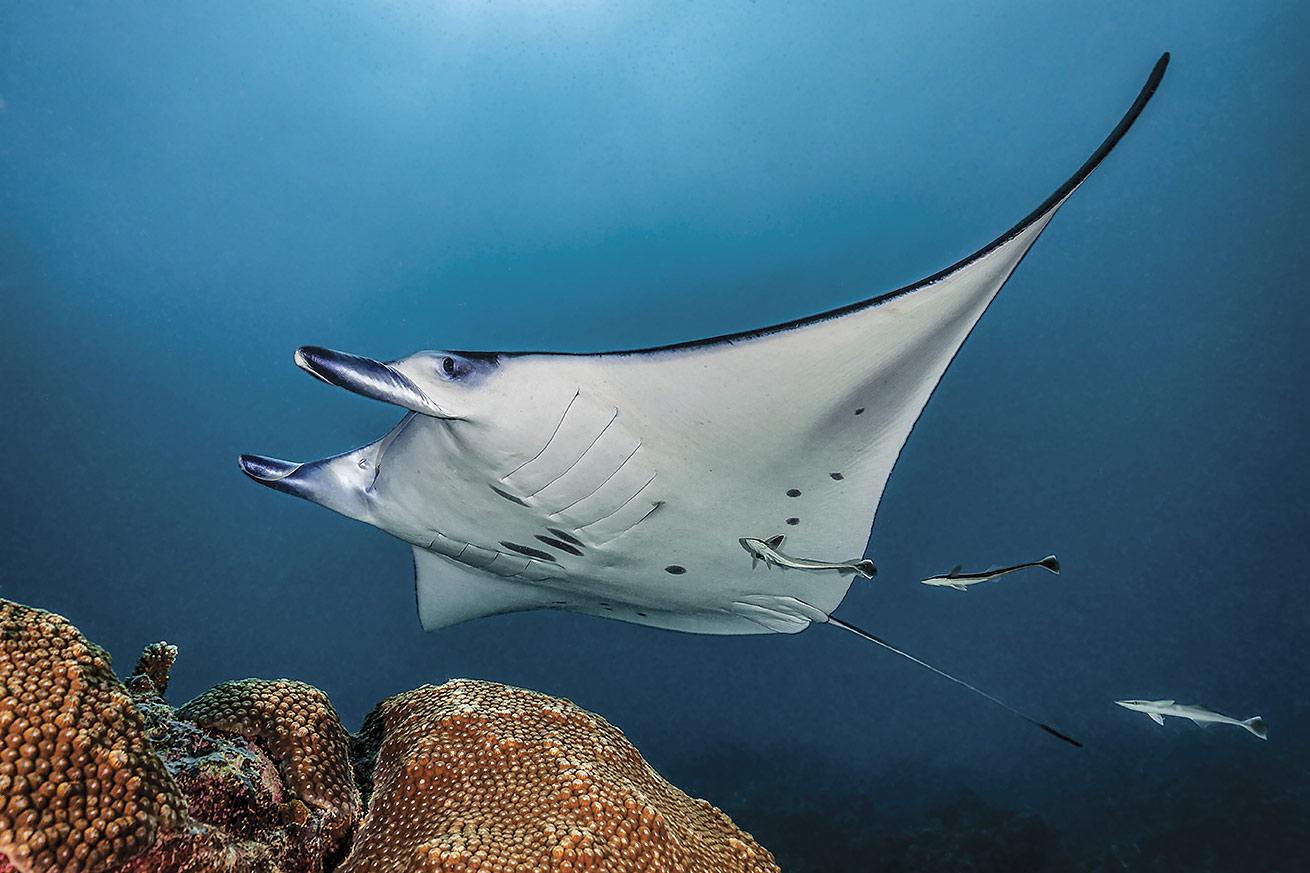
Tobias FriedrichA reef manta at German Channel.
Fun Without A Tank
In the afternoons, wetsuit hung up for the day, I paddle one of Four Seasons Explorer’s kayaks or stand-up paddleboards out into whichever Rock Islands are our backdrop for the evening. It’s incredible to be alone in this remote and wondrous place, to imagine the mere dot it is on the globe, and to hear just my heartbeat, the sound of the water lapping at the limestone islands and the heavy-winged burst of a fruit bat or other unseen winged thing startling from a tree. Not another human in sight. Such experiences are perhaps the ship’s most enviable luxury offering.
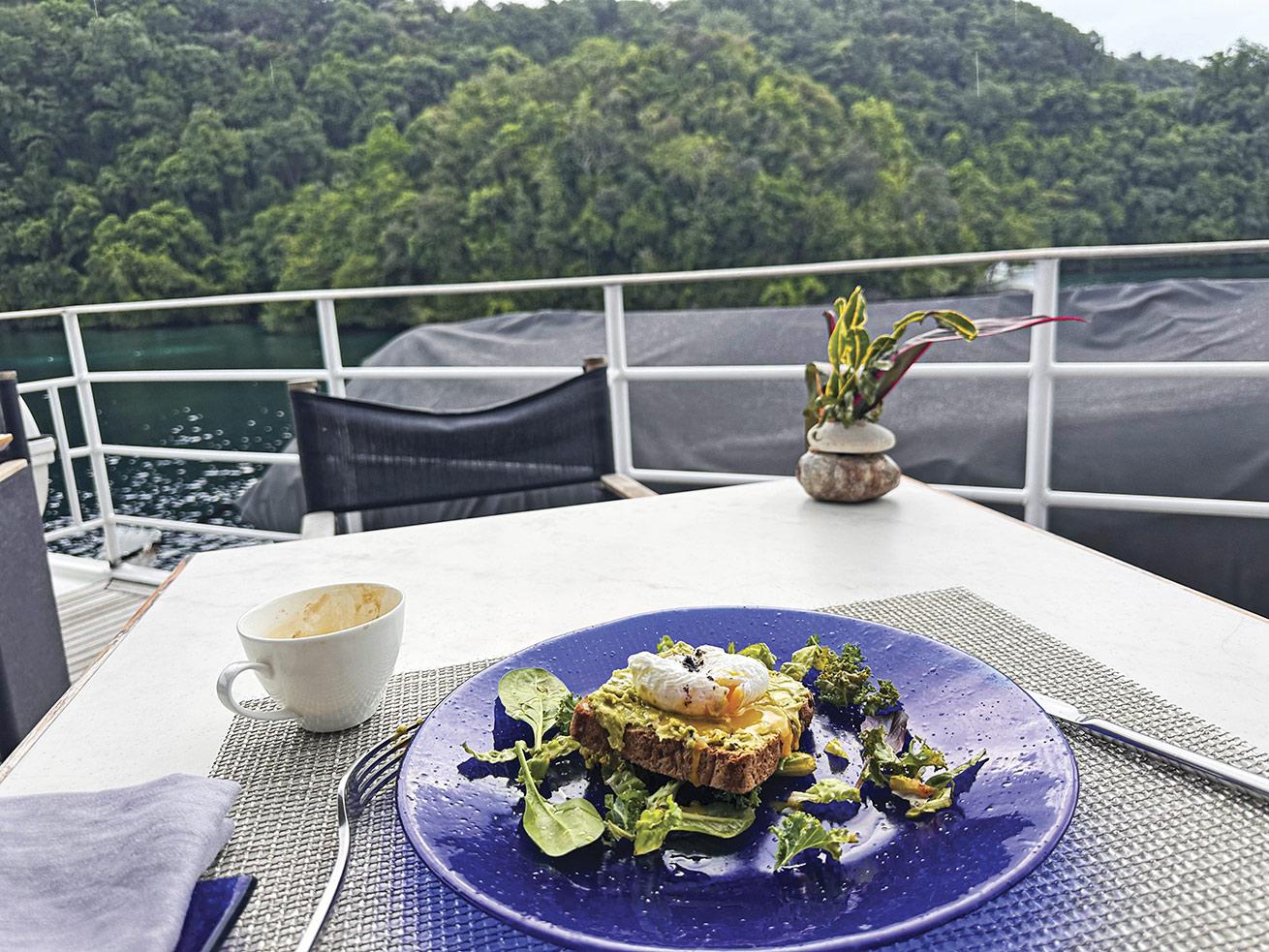
Terry WardFour Seasons Explorer’s menu highlights Palauan ingredients.
I take every single meal alfresco on the liveaboard’s stern deck, where lunch and dinners under the stars unfold in a multicourse parade of international and Palauan-influenced dishes. One day, there’s clam tagliolini, a take on vongole pasta (fresh handmade pasta served with Palauan mangrove clams), as delicious as anything I’ve tried in Italy.
“The idea is to understand the local food and culture and ingredients used here,” says Marco Stramaccia, head consultant chef for Four Seasons Explorer Palau, who spent weeks visiting local purveyors and markets with the ship’s owner to curate the onboard menus, which feature specialties such as giant clam ceviche (the bivalve is farmed on Palau) and other sustainable dishes.
Every evening, guests gather in the lounge for video presentations of the day’s diving highlights (a videographer accompanies all dives), the underwater scenery like something from a nature documentary—with us as the stars. And Aguilar presents interesting talks every afternoon, with topics ranging from coral spawning to the fragility of Palau’s famous Jellyfish Lake, which he explains is currently in a state of regeneration and thus very few of the golden jellyfish can be seen.
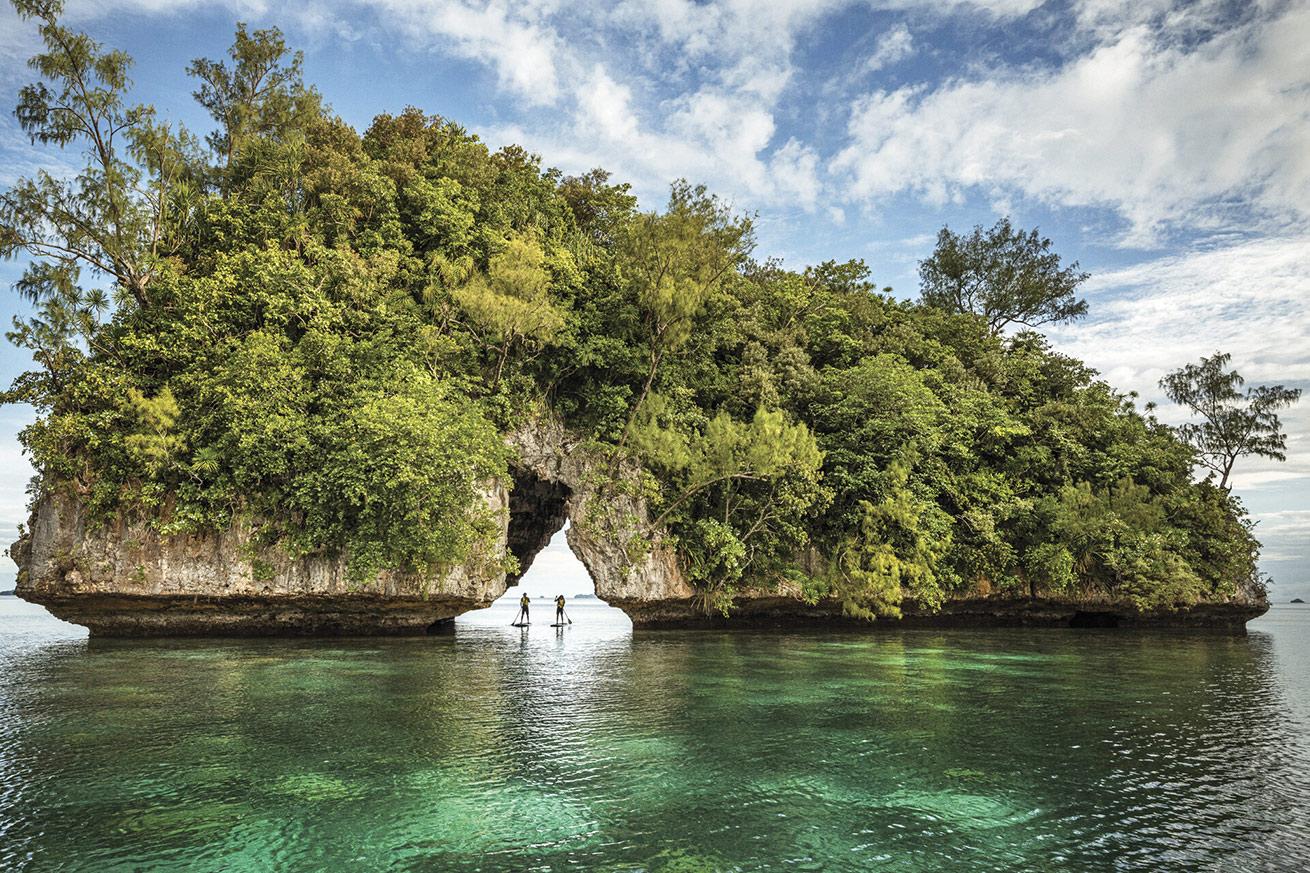
Courtesy Four Seasons Explorer PalauPaddleboarders check out the unique Rock Islands topography.
On my last day, the no-fly one, I do something I almost never do after consecutive days filled up on diving—I snorkel.
That’s when Leo Leung, a dive guide aboard Four Seasons Explorer, casually lets fly that he’s Hong Kong’s freediving record holder (what!?) and offers to bring his camera along to our snorkel site, should I want to try diving down for some shots.
I admit to him I’m not good at freediving (an understatement), a scuba diver happy to suck air through a tank through and through. But with a little coaching, I manage to comfortably descend deeper than I usually can on a breath hold and stay down long enough to swim comfortably alongside yet another sea turtle among pristine staghorn and table coral layers at Ngerchong Inside.
It’s easily the most spectacular shallow fringing reef I’ve ever seen, all staghorn fingers and elkhorn antlers reaching skyward and big beautiful brain corals stretching as far as the insane visibility allows me to see. In that setting, if only for a split moment, I feel almost as resplendent as Palau.
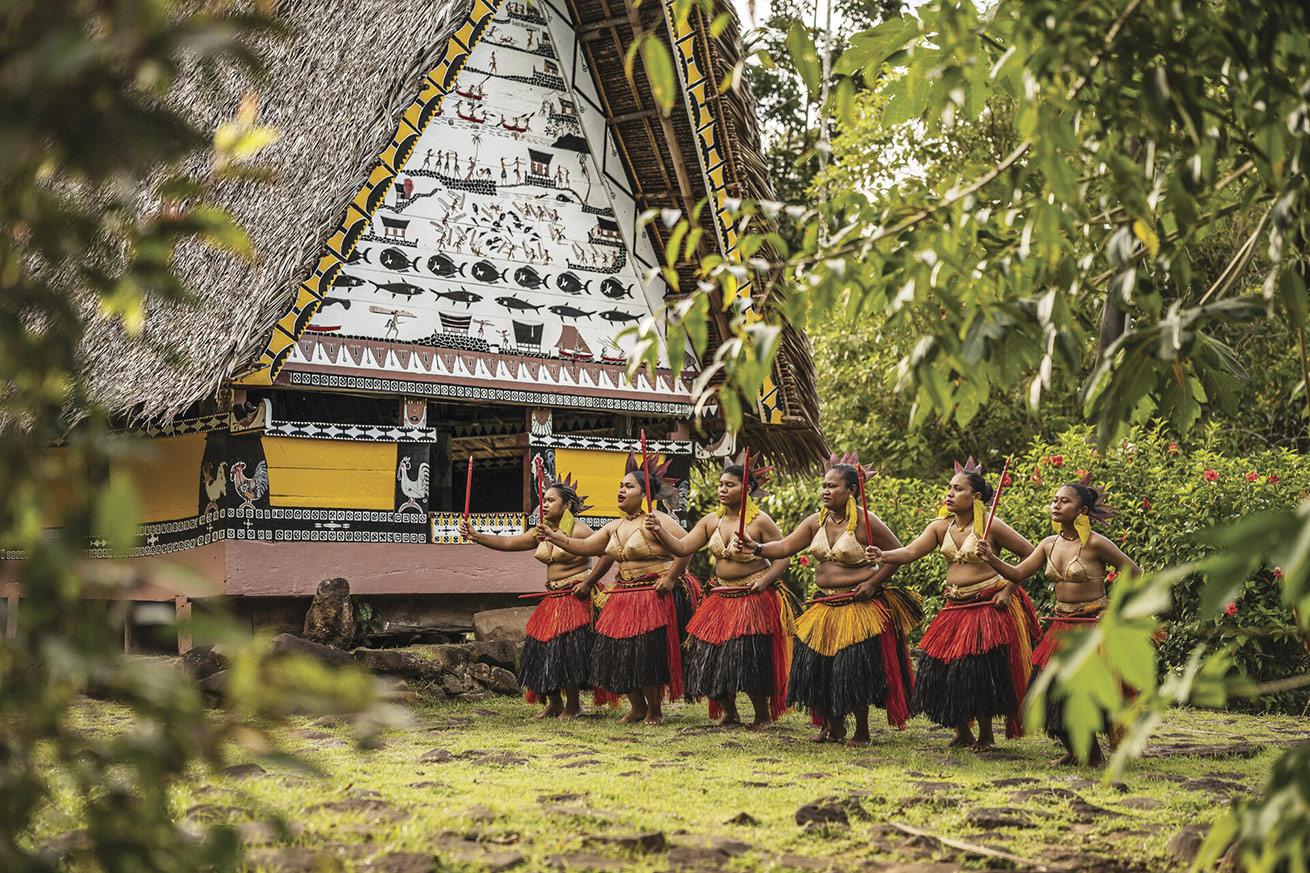
Courtesy Four Seasons Explorer PalauCultural experiences include a visit to a traditional meeting house on Babeldaob.
Adventures Above Water
Peleliu Island
Divers know this island 23 miles south of Koror for its vertical walls washed with ripping currents and emblazoned with colorful coral. But Peleliu is better known to history as the tragic site of one of the bloodiest World War II battles in the Pacific. Guests of Four Seasons Explorer head out on biking and walking tours of the island with Palauan guide Des Matsutaro to visit sites that include a former Japanese headquarters and rusting tanks deep in the lush island jungle.
Babeldaob Island Tours
Also offered once a week aboard Four Seasons Explorer, private guided island tours of Palau’s largest island, Babeldaob, will see you visiting a century-old bai (the traditional Palauan meeting and gathering house) as well as the Badrulchau Stone Monoliths. One of the archipelago’s oldest archaeological sites, the 52 ancient stone monoliths on Babeldaob’s northern tip date to A.D. 161 and include some spectacular examples with faces carved deep into the basalt.
Paddling Tours In Long Lake
Paddling Palau offers a range of kayaking day trips as well as overnight camping safaris into the Rock Islands. In the former category, one of my favorites is a paddling adventure into Long Lake accessed via a long and winding mangrove-lined channel. Guides might point out juvenile feathertail stingrays and other baby species that seek protection in the shallows here, then take you to snorkel atop a colorful collection of shallow brain corals that are completely unique to this location.
Need To Know
When To Go
You can dive Palau year-round, but the dry season, from October to May, brings calmer seas and the best visibility. December through March are the best months to see manta rays. Palau is known for incredible spawning events, including humphead parrotfish that spawn just before the new moon every month in a spectacular aggregation and Moorish idols that gather in large schools to spawn between December and late January. Sailfin snapper spawn around Peleliu in March, April and June.
Dive Conditions
Water temperatures in Palau are between 81 and 86 degrees yearround, and visibility is best between November and April, when it can exceed 130 feet.
Operator
Four Seasons Explorer (fourseasons.com) operates year-round in Palau. Rates start at $2,800 per room per night based on double occupancy. The rates are subject to 10 percent service charge and 20 percent Palau goods and service taxes. Three meals per day, three dives per day plus all gear, guided cultural day trips, nonmotorized water sports and snorkeling excursions are all included in the cost.


